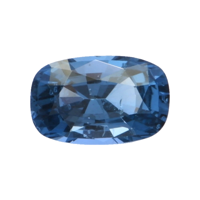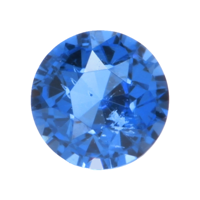Mohs Scale of Cobalt Spinel
Understanding the Mohs Scale of Cobalt Spinel is essential for anyone interested in the durability and wearability of this stunning gemstone. The Mohs Scale of Cobalt Spinel ranks it at an impressive 8, indicating its excellent resistance to scratches and everyday wear. This high ranking on the Mohs Scale of Cobalt Spinel makes it a durable choice for various types of jewelry, from rings to pendants. In this blog, we will explore the significance of the Mohs Scale of Cobalt Spinel, providing insights into how this rating impacts its use, care, and longevity. By delving into the Mohs Scale of Cobalt Spinel, you can make informed decisions about incorporating this beautiful stone into your collection, ensuring it remains stunning and resilient over time.

Overview of the Mohs Scale
The world of gemstones is a fascinating spectrum of beauty, rarity, and scientific intrigue. One of the most crucial aspects in understanding gemstones is their hardness, a key factor in determining their durability, usage, and even their allure. This is where the Mohs Scale of Mineral Hardness becomes a pivotal tool. Developed in 1812 by the German mineralogist Friedrich Mohs, this scale provides a systematic and comparative method to assess the hardness of various minerals, including gemstones.
Understanding the Mohs Scale

The Mohs Scale is ingeniously simple. It ranks minerals on a scale from 1 to 10 based on their ability to scratch another mineral. The scale begins with talc at 1, the softest mineral, and culminates with a diamond at 10, the hardest known natural substance. Each mineral can scratch those below it and be scratched by those above it. This relative scale, though not proportional, is immensely valuable in the gemstone industry.
Gemstones and the Mohs Scale
Gemstones, each with a unique position on the Mohs Scale, exhibit a diversity of hardness that directly influences their usage and care. For instance, softer gemstones like opal (Mohs hardness 5.5-6) require more careful handling than harder gems like ruby (Mohs hardness 9).
- Talc (1) – Extremely soft, not used in jewelry.
- Gypsum (2) – Also very soft, mainly used for ornamental purposes.
- Calcite (3) – Often too soft for most jewelry applications.
- Fluorite (4) – Can be used in jewelry but requires careful wear and maintenance.
- Apatite (5) – Slightly harder, but still prone to scratching, suitable for pendants and earrings.
- Orthoclase (6) – Marks the beginning of suitability for regular jewelry use.
- Quartz (7) – Widely used in jewelry, durable for daily wear.
- Topaz (8) – Highly prized for its hardness and variety of colors.
- Corundum (Ruby/Sapphire) (9) – Excellent for all types of jewelry, second only to diamond in hardness.
- Diamond (10) – The epitome of hardness, ideal for engagement rings and everyday wear.
Significance in Jewelry Making
In jewelry making, the Mohs Scale helps in selecting appropriate gemstones for specific types of jewelry. For example, gemstones with a Mohs hardness of 7 or higher, like quartz, topaz, and diamonds, are suitable for rings that are worn daily. On the other hand, softer gemstones are often reserved for pieces like brooches or earrings, which are less exposed to wear and tear.
Practical Implications for Gemstone Care

Understanding a gemstone’s position on the Mohs Scale also guides its maintenance. Harder gemstones can be cleaned with more abrasive methods without fear of scratching, while softer gemstones require gentler cleaning methods.
The Mohs Scale remains an indispensable tool in the gemstone industry. Its simplicity and effectiveness in measuring hardness not only assist in the practical aspects of jewelry making and care but also contribute to the appreciation of the innate beauty and durability of these natural wonders. By understanding where a gemstone stands on the Mohs Scale, enthusiasts, and professionals alike gain deeper insights into the nature and value of these precious stones, making the scale a cornerstone of gemological knowledge.
Cobalt Spinel Gemstones and their Mohs Ratings
Dive into the captivating world of Cobalt Spinel, a gemstone that harmonizes the richness of color with the marvels of nature’s artistry. As enthusiasts and collectors of fine gemstones seek treasures that are not only beautiful but also unique, Cobalt Spinel emerges as a jewel that promises both rarity and a tantalizing spectrum of blues.
Cobalt Spinel is a mesmerizing variety of Spinel, a mineral that has long been revered in the gemstone universe for its array of colors and crystalline beauty. The ‘Cobalt’ in its name is derived from the presence of cobalt ions, which infuse the stone with a distinctive and vibrant blue hue, ranging from deep ocean blues to lighter sky blues. This range of blue is rare in nature, making Cobalt Spinel a highly sought-after gem for collectors and connoisseurs.
K6124| medium | play | middle | “0.44 Ct. Tanzania No Enhancement Blue Cobalt Spinel”
Geological Formation
Cobalt Spinel is formed through metamorphic and igneous processes, typically found in alluvial deposits alongside rivers and streams where they have been washed away from their sources. These stones are primarily mined in Sri Lanka, Vietnam, Tanzania, and Madagascar, with each location contributing to slight variations in hue and clarity.
Crystal Structure and Composition:
At its core, Spinel belongs to the cubic crystal system, characterized by its symmetrical and balanced crystal structure. This structural integrity contributes to its excellent durability. Composed of magnesium aluminate, the addition of cobalt results in the rich blue coloration that sets this gem apart from its counterparts.
Mohs Rating – The Measure of Durability:
The Mohs scale, a standard for gauging mineral hardness, is crucial in evaluating the suitability of gemstones for daily wear. Cobalt Spinel ranks impressively high on this scale, with a rating of 8. This signifies its excellent durability, making it resistant to scratches and abrasions. Its robustness is comparable to topaz and just below sapphires and diamonds, making it an ideal choice for jewelry that withstands everyday use.
In the realm of gemstones, Cobalt Spinel is a symphony of deep, enchanting blues, strength, and timeless elegance. Its hardiness on the Mohs scale makes it not just a feast for the eyes but a practical choice for everyday wear. A jewel that encapsulates the mysteries of the earth’s depths, Cobalt Spinel is a testament to the beauty and resilience of nature’s creations, making it a prized possession for any collector or jewelry enthusiast.
Limitations of the Mohs Scale
When it comes to the assessment and appreciation of gemstones, the Mohs Scale of Mineral Hardness is a fundamental tool used by gemologists and enthusiasts alike. However, its application is not without limitations, especially in the context of specific gemstones like Cobalt Spinel. This insightful exploration will delve into the nuances of the Mohs Scale and how it interacts with the distinctive properties of Cobalt Spinel, providing valuable insights for both professionals and aficionados in the gemstone domain.
Cobalt Spinel, known for its striking blue color, is a rare and coveted gemstone. This gem is chemically composed of magnesium aluminate, with cobalt imparting a distinctive blue hue. Typically, spinels rank 8 on the Mohs Scale, indicating a high level of hardness and suitability for various types of jewelry.
Limitations of the Mohs Scale in the Context of Cobalt Spinel
Scale Linearity and Misinterpretation: The Mohs Scale is not linear or proportional. For instance, the jump in hardness from 9 to 10 is significantly greater than from 8 to 9. This means that while Cobalt Spinel is quite hard, it’s substantially softer than a diamond (10). This gap is often misunderstood, leading to misconceptions about the durability of spinel.

- Lack of Differentiation in Toughness: Hardness should not be confused with toughness. The Mohs Scale only measures resistance to scratching, not the overall durability or resistance to breaking, chipping, or cracking. Cobalt Spinel, despite its hardness, can be susceptible to such damage, especially along crystallographic planes.
- Variability in Natural Stones: Natural Cobalt Spinels can exhibit variability in hardness due to impurities or internal structural differences. The Mohs Scale, being a generalized tool, doesn’t account for these variances within a single type of mineral.
- Oversimplification for Gemstone Selection: When choosing gemstones for jewelry, factors like brilliance, color stability, and reaction to light are crucial. The Mohs Scale doesn’t provide insights into these aspects, which can be especially pertinent for Cobalt Spinel known for its exceptional color.
Implications for Professionals and Enthusiasts
Understanding these limitations is crucial for professionals in gemology, jewelry design, and collectors. Proper care, setting, and handling of Cobalt Spinel require more than just knowledge of its Mohs hardness. For instance, knowing its susceptibility to cracking informs decisions about setting styles and the type of wear it is suitable for.
While the Mohs Scale is an invaluable tool in gemology, its limitations, particularly when applied to gemstones like Cobalt Spinel, highlight the need for a more comprehensive understanding of gemstone properties. The scale serves as a basic comparative guide but does not encompass the full spectrum of characteristics that make Cobalt Spinel a unique and cherished gem. For connoisseurs and professionals, an appreciation of these nuances is key to fully understanding and appreciating the beauty and value of this exceptional gemstone.
Wondering how durable Cobalt Spinel is? Discover its resilience and strength in our guide on the Durability and Hardness of Cobalt Spinel!
